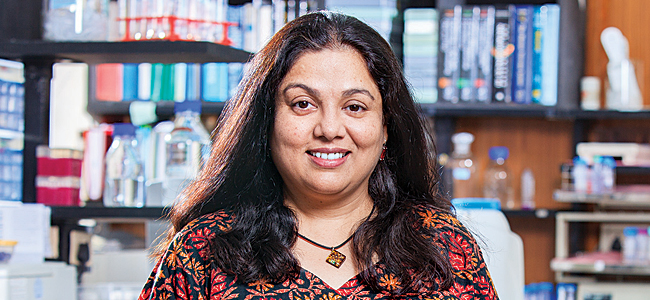
Shubha Tole works as a professor of Neuroscience at The Tata Institute of Fundamental Research. She has been recognised and awarded for her research, including being awarded the prestigious Infosys Prize in 2014 for her work on understanding brain development in the embryo.
Shubha is known to be vocal about the unique issues she has faced as a woman scientist. In 2009, as member of a committee to reform the competitive grant system of the Department of Bio-Technology, Government of India, she recommended an exclusive childcare allowance for women postdocs and principal investigators, to encourage higher quality and consistency of childcare.
In an interview with Shaifali Agrawal who volunteers at TARSHI, Shubha talks about social and subconscious biases in society against female scientists, her approach to tackling these challenges, and how she helps her female students maintain a healthy balance between their personal and professional life. She also talks about positive changes that have taken place in the science workplace over the years, and gives some great advice to women who might be second-guessing their capabilities of pursuing a career in science.
Shaifali’s questions (with audio timecode):
00:00 What are some of the common challenges that women working in the field of science have to face?
01:32 To what extent do these challenges contribute to the problem of attrition of women scientists, and when does it begin to take place?
06:05 How did you personally attack the problem of internal bias?
09:32 While such an approach has been helpful to you, were there still ever any moments of self-doubt when you questioned your capabilities of being successful?
10:58 As a professor at TIFR, have you observed any difference in the way men and women approach research opportunities and their careers?
12:29 As a mentor and advisor, how do you encourage your female students to maintain a healthy balance between their professional careers and personal obligations?
14:32 How much have things progressed or changed socially and institutionally in the 20 years that you have been working in neuroscience?
18:45 According to a 2012 study by Elsevier, the enrolment of female students in India in biological, medical and life sciences is 80.4%, while that in engineering and physics a mere 32%. How would you explain the huge difference in the number of female students in the various streams of academic science?
20:38 What should be done at an institutional and social level to tackle this huge difference?
22:03 Any last words to women who might be under-confident, for whatever reasons, to take up a career in science?
—
Cover image credit: Infosys Science Foundation